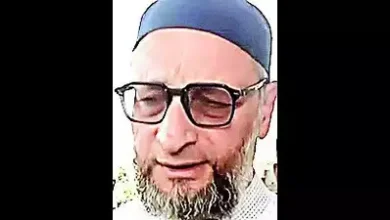What makes Karpoori Thakur a prominent figure in Bihar politics, and how did Nitish adopt his strategy to stay in power?
A day before his birth anniversary, Karpoori Thakur, the Jan Nayak of Backward politics in Bihar, was selected to receive the nation’s highest civilian honor, the Bharat Ratna.

Rashtrapati Bhavan’s declaration to bestow the nation’s highest civilian honor was praised by the opposition BJP and its allies as well as the governing parties in Bihar, the Nitish Kumar-led JD(U) and RJD.
The government’s choice to award Thakur the Bharat Ratna, according to Prime Minister Narendra Modi, is evidence of the socialist leader’s persistent efforts as a defender of equality and a champion of the underprivileged.
POSSIBLELY KARPOORI THAKUR?
Bihar’s chief minister, Karpoori Thakur, sometimes referred to as “Jan Nayak,” held the position from December 1970 to June 1971 again from December 1977 to April 1979.
In 1924, Thakur was born in a hamlet in the Samastipur area, in the Nai Samaj (barber community), one of the most disadvantaged groups. His political career was distinguished by his steadfast dedication to the underprivileged segments of society.
When Thakur was a young student, he started his political engagement during Quit India, which landed him in prison for many months. He began working as a teacher in a village school, but he had always been interested in politics and showed promise when he won the Socialist Party’s candidacy in the 1952 first state assembly election from the Tajpur constituency. At the time, the Congress dominated politics.
Although Karpoori Thakur eventually became close to Ram Manohar Lohia, he had previously been close to Jayaprakash Narayan. Because of his leadership abilities, people from the higher castes revered him even though he was from a lower caste.
ACCELERATION IN POLITICS
Karpoori Thakur gained notoriety in 1967 when Mahamaya Prasad Sinha led the state’s first non-Congress administration.
English was never required in schools under Thakur, who went on to become the Deputy Chief Minister of Bihar and controlled the education responsibility.
Thakur served as Chief Minister for two brief periods of time, during which his influence was fleeting. However, veteran RJD leader Shivanand Tiwary, whose late father Ramanand Tiwary had been one of Thakur’s allies in arms, notes that in those days, rising to the highest seat of power was no mean feat for a person coming from a poor family and the extremely backward and numerically small caste Nai (barber).
After winning his first election in 1952, Thakur never lost again because of his widespread support for social justice and modest lifestyle.
WHY IS KARPOORI THAKUR PRESENT IN BIHARI PHILIPPIDS?
Thakur was the first prominent figure in Bihar to advocate for the empowerment of the underprivileged, a move that eventually resulted in the Mandal Commission’s recommendations being put into practice.
Even though the Nai community made up just 1.6% of the total population in the 1970s, Thakur was the first to organize the lower castes at a time when their political space in state politics was restricted. In 1978, he cleared the path for them to get a 26% reservation in Bihar’s government services.
Later, in 1990, the government headed by VP Singh carried out Karpoori’s backward outreach by enacting the Mandal Commission’s proposals for Other Backward Classes (OBC) quota on an all-Indian basis.
As a result of the implementation, the OBCs became a powerful electoral bloc and Mandal politics emerged in Bihar, bringing regional parties like the governing Janata Dal (United) (JD(U)) and the Rashtriya Janata Dal to power.
WHAT NITISH DID TO FOLLOW KARPOORI’S STEPS
Since the 1990s, both Chief Minister Nitish Kumar and RJD supremo Lalu Prasad Yadav have used the Karpoori tradition to their advantage to keep control of the government firmly in the hands of the underprivileged.
In the context of the employment reservation in Bihar, Nitish Kumar, the state’s longest-serving chief minister, oversaw the application of Karpoori’s formula.
“Relatively more backward” and “relatively less backward” were the divisions Thakur made between the backward castes. Nitish divided the backward classes into two groups: the other backward class (OBC) and the exceptionally backward class (EBC) using Thakur’s methodology.
In order to position himself as the head of the EBCs and challenge Lalu Prasad Yadav’s support base, the Bihar chief minister additionally set aside 18% and 12% of government posts for OBCs and EBCs, respectively.







